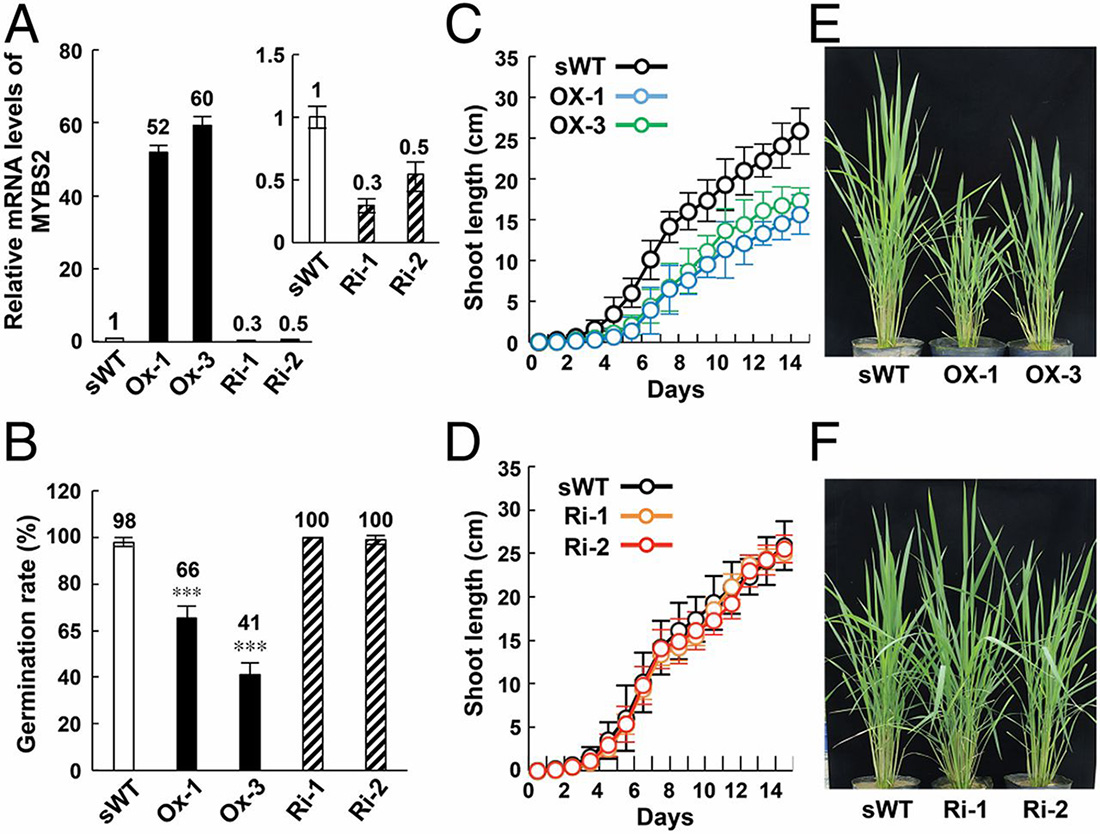
 中央研究院 生物化學研究所
中央研究院 生物化學研究所
Autotrophic plants have evolved distinctive mechanisms for maintaining a range of homeostatic states for sugars. The on/off switch of reversible gene expression by sugar starvation/provision represents one of the major mechanisms by which sugar levels are maintained, but the details remain unclear. α-Amylase (αAmy) is the key enzyme for hydrolyzing starch into sugars for plant growth, and it is induced by sugar starvation and repressed by sugar provision. αAmy can also be induced by various other stresses, but the physiological significance is unclear. Here, we reveal that the on/off switch of αAmy expression is regulated by 2 MYB transcription factors competing for the same promoter element. MYBS1 promotes αAmy expression under sugar starvation, whereas MYBS2 represses it. Sugar starvation promotes nuclear import of MYBS1 and nuclear export of MYBS2, whereas sugar provision has the opposite effects. Phosphorylation of MYBS2 at distinct serine residues plays important roles in regulating its sugar-dependent nucleocytoplasmic shuttling and maintenance in cytoplasm by 14-3-3 proteins. Moreover, dehydration, heat, and osmotic stress repress MYBS2 expression, thereby inducing αAmy3 Importantly, activation of αAmy3 and suppression of MYBS2 enhances plant growth, stress tolerance, and total grain weight per plant in rice. Our findings reveal insights into a unique regulatory mechanism for an on/off switch of reversible gene expression in maintaining sugar homeostatic states, which tightly regulates plant growth and development, and also highlight MYBS2 and αAmy3 as potential targets for crop improvement.
